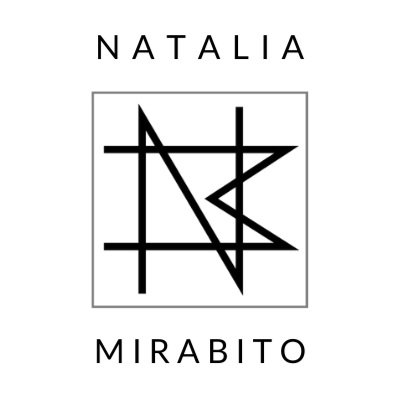How to Make Giclée Prints
A professional artist’s guide to making and selling profitable giclée prints.
How do I know I’m ready to make prints?
So you're ready to grow your art business and invest in museum-quality archival giclée prints for your art business. You’ve identified a painting that is a fan-favorite, you have a website or place to sell your work, and an email list eager to be the first to know about the new launch of prints.
If any of these items are not yet in place, get in touch and we’ll strategize how to get you there and make sure you’re prepared for this next step in your fine art business.
If you’re ready to price your prints, read How to Price Giclée Prints.
If you’re ready to land the sale every time, read How to Sell Your Art with Confidence
The first thing to know is that the highest quality giclée's are typically an upfront investment with a three step in-person process, (that is, if you're going to the right people who are using the right technology, care and quality).
The second thing to remember is you set your prices--and you alone. You control whether your prints are profitable. We’ll show you how to price for profitability, account for every penny and be confident in your pricing.
Which giclée printing method should I choose?
In our experience, it is worth investing in high quality professional printers that create archival, museum quality accuracy with perfect color gradation, matching and uncanny likeness to the original work.
How to get started?
First, you’ll need to decide what is best for you and your business goals:
1. Print on-demand online vs. professional printer in-person
2. Open prints vs. limited edition prints
Print on Demand (online)
Pros: Fast, easy, cheap
Cons: No quality control, little-to-no color matching or proofs, limited customer support
Process: Upload a photo of your artwork online, order, and ship — what you see is what you get and returns for quality or damage may not be allowed.
Professional Printer (in person)
Pros: Guaranteed archival museum quality, perfect color matching, archival pigment, opportunity for higher-end clientele and profit margin
Cons: May take longer and have more upfront costs
Process: Museum-quality image capture, proof review, printing by the yard
Open Edition: no limit to the number of prints created in any size, can be more affordable, while perhaps seen as less valuable in the eyes of some collectors.
Limited Edition: the number of prints is pre-determined before printing with no more printed after all are sold. The smaller the edition size, the more valuable. When they’re gone—they’re gone.
Edition numbering: Each print is numbered — for a limited edition run of 50, each work would be hand-numbered and signed in pencil by the artist, i.e., 1/50…2/50 and so on.
Sizing: You can print in various sizes, but be sure to be clear and transparent about this — for example, for one painting, you may decide to make 5 extra large prints,20 medium sized prints, and 15 small prints. This gives a variety of options for sizing, as well as price point. Some early stage or emerging artists may choose to have 100 limited edition prints available, while seasoned or in-demand artists may only offer as low as 20.
What is the Giclée Printing Process Like?
The following process description is my experience with giclée printing at a professional print shop in-person using archival pigments and museum-quality equipment and tools. The process takes 2-4 weeks, and the print shop typically will keep your original painting on-hand until the final proof is decided.
The Giclée Printing Process:
Image Capture
It may cost anywhere from $50-$100 to create the digital image file. The image quality of this type of image capture is far greater quality than an artist can capture at home, and can be resized for any purpose. For example, I have scaled up a 12x12 inch painting to a 40x40 canvas print and the quality is phenomenal.
For true giclee prints, nothing should touch your artwork. The image capture system used should resemble an x-ray machine, be quite large, and will not touch the surface of your artwork in any way.
Proofing
Your shop will print proofs for color correction and print multiple proofs for your review to get the print as close to the original as possible. Typically in-person, you'll return to the print shop after a week or so to review the print proofs. Each printed proof may have slight variances in hue, contrast, sharpness, warms, cools, and so on. Often, there is a clear winner of the proofs. Otherwise, there may be just one or two sections of the work that are well-printed on one proof and these perfections can be easily carried over to the near-perfect proof. Always review the newly final proof if you merge different edited sections and communicate clearly with the designer/printer when doing so.
Printing
Your print shop can help advise on the best paper type and weight for your medium. Popular papers may include cotton rag, professional photo paper, watercolor paper, hand-stretched canvas, or various metals. You can decide the border width you'd like on the print — typically 1-2 inches. A good print shop will walk you through the options based om your medium or the work itself)
Printing is often done by the roll. The number of prints to be printed at one time is often determined by the overall size of the paper. So, given my work is small around 6x6, I can often fit 2-4 prints on one large piece of paper if the place prints by the yard. The printing costs anywhere from 30-70$ per sheet.
When selecting what size to print, whether open or limited edition, it will be immensely helpful to choose standard sizes that are easy for customers to frame. Common sizes (including the print border!) may include: 4x6, 8x8, 8x10, 12x12, 9x12, 14x18, 18x24, 24x24, 24x36

